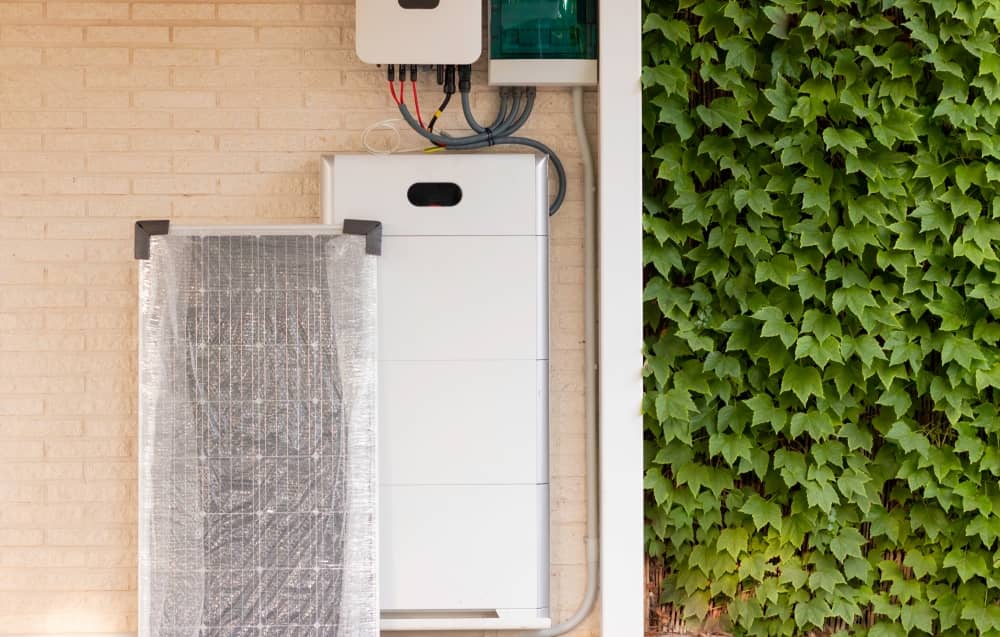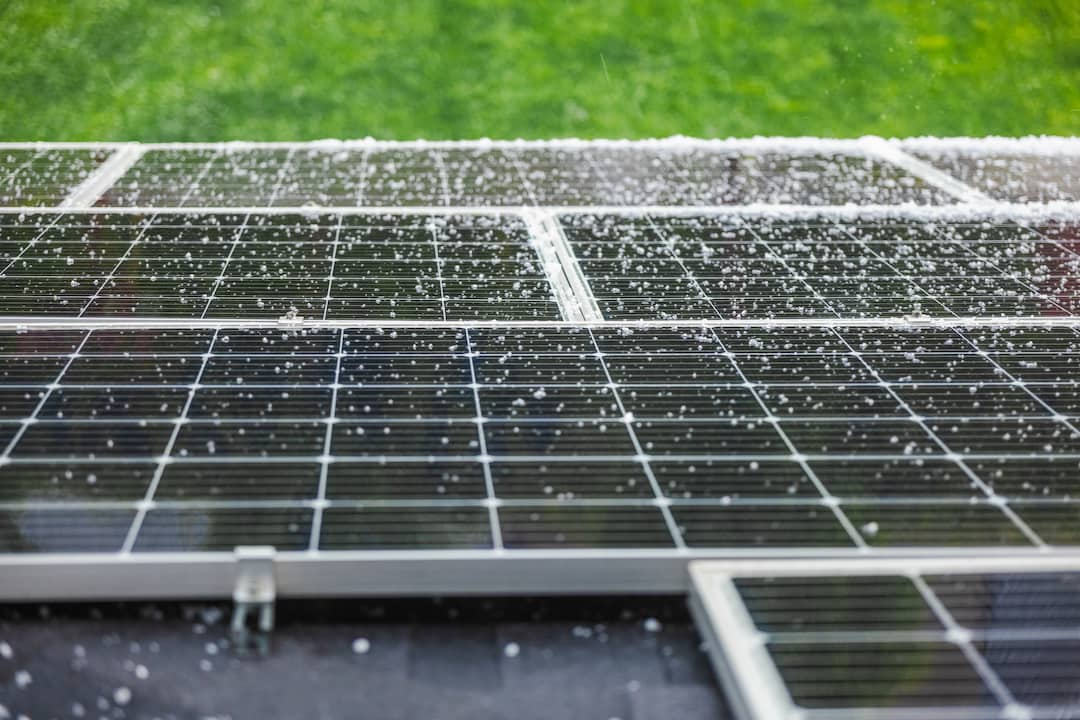Our customers frequently ask us, “What size solar battery do I need”? Choosing the right solar battery size is important for adequate solar power and maximum efficiency. This step-by-step guide will cover how to size a solar battery for Aussie households. We’ll teach you how to find the best battery size for home solar setups to ensure you have an efficient, reliable system.
We touched on this question in our Solar Battery Power Guide, but this post will go further in-depth.
How Is Solar Battery Size Measured?
Solar battery size is measured in kilowatt-hours (kWh). Typical residential options range between 5 to 20kWh.
It’s also important to understand Usable capacity vs Total Capacity and Depth of Discharge for solar batteries:
- Usable Capacity: How much energy you can draw from the solar battery; always less than the total capacity
- Total Capacity: The maximum energy the battery can store
- Depth of Discharge (DoD): The amount of energy that has been used out of a solar battery; DoD is shown as a percentage of the total capacity
You May Also Like: How Do Solar Powered Batteries Work?
Start with Your Night-Time Usage
One of the first steps on how to size a solar battery is determining your nightly energy usage. During the day, solar panels can produce usable energy to rely on. But nightly energy usage is pulled from the grid.
By determining your nighttime energy usage, you ensure your solar battery has enough stored energy to meet your needs.
An average Australian home uses around 16 kWh – 18 kWh of energy per day. If you are one of the many homeowners with a 9 to 5 job, a good portion of your energy consumption likely occurs during the night.
If a household uses 18 kWh of energy a day, with 7.2 kWh of average nightly usage, we’d suggest an 8kWh battery.
Typical Solar Battery Sizes for Australian Homes
Here are some general guidelines for how to size a solar battery for common household sizes:
| Energy Usage Details | Suggested Solar Battery Size |
| 2 to 3 person household; 10 – 12 kWh daily usage; 4 – 5 kWh nightly usage | 5 to 6 kWh |
| 3 to 4 person household; 14-18 kWh daytime use; 6-8 kWh nighttime usage | 8-10 kWh |
| Large household; energy heavy; 20+ kWh daily; 10+ kWh nightly usage | 10-13+ kWh |
Learn More: Perth Solar Batteries
Other Factors That Affect Battery Sizing
Along with determining your nighttime energy usage, here are other factors that affect how to size a solar battery.
1. Energy Goals
First, we recommend evaluating your energy goals to help you find the best solar battery for your home setup. The more energy independence you desire, the larger solar battery you will need.
Some helpful questions to answer, “What size solar battery do I need?” include:
- Do I want to maximise self-consumption?
- Do I want to completely cover my electricity bill?
- How much autonomy (the amount of time your battery will provide power during a grid outage) do I want?
- Do I want to gain blackout protection and maximum grid independence?
- Do I want to go fully off-grid with my solar system? (Learn about the Benefits of Off-Grid Solar)
You May Also Like: How to Use Solar During Power Outage
2. Solar Panel Size
Solar system size is another key factor in deciding how to size a solar battery.
Think of it this way: Solar panels generate clean energy. Solar batteries store this generated energy.
A properly sized solar system will generate enough energy to fill the solar battery. Small solar arrays may not generate enough energy to fill large batteries. For instance, a 5 kWh system may not generate enough energy to fill a larger battery, making it less efficient.
A solar system needs the correct type and number of solar panels, along with appropriate inverter capacity.
A general rule for how to size a solar battery is 1.2kW of solar per 2kWh of battery capacity. Typically, a 6.6 kWh solar system is needed to fully charge a 10+ kWh battery reliably. A system with more solar panels and higher output will need a larger battery that is capable of storing generated energy.
3. What You Want to Power
Another key factor for how to size a solar battery is what you intend to power. For instance, if you mainly need energy for lights, small appliances, or your fridge, a smaller battery may suffice.
Most Australian households can expect to use around 16kWh daily. However, homes that run high-consumption appliances can use 30kWh or even more.
When considering how to size a solar battery, ask yourself which of these high-consumption appliances you use:
- Air con units
- Pool pumps
- Electric vehicle chargers
- Electric water heaters
You may also want to consider a larger solar battery if you want a whole-home backup.
4. Tariffs & Time-of-Use Rates
Time of Use (ToU) tariffs may become mandatory, allowing homeowners to deduct high per-kWh costs incurred during peak usage. For instance, in Sydney, high peak hours are from 3 PM to 9M. Adding a solar battery to utilise off-peak rates can significantly decrease your electricity bills.
Adding a solar battery can also help turn individual solar systems into virtual power plants (VPPs). VPPs utilise battery-paired solar systems to create a network of energy resources. These are beneficial for increasing grid stability and taking advantage of possible financial benefits.
To be eligible for federal solar rebates, solar batteries must be VPP capable (more on this below).
Solar Battery Rebates in Australia
Federal Solar Rebates Australia
The Cheaper Home Batteries program is a new Federal rebate that began on 1 July 2025.
This national solar battery rebate gives a discount on installing home batteries to reduce the upfront cost.
The Australian Cheaper Home Batteries program at a glance:
- Eligibility is not means tested
- Capped at $372 per kilowatt hour (kWh) of usable battery capacity (potential discounts around $330 per kWh once admin fees are applied)
- Available for new batteries, replacements, or adding extra capacity (this can be up to 100kWh if no other federal rebates were claimed in the past)
- Can provide a potential price reduction of 30 to 40% on the initial cost of solar battery installation
- The battery and inverter must be Clean Energy Council (CEC) approved
- The battery and inverter must be installed by an accredited installer
- Batteries must be 5kWh+ usable capacity and installed with solar panels
- Grid-connected batteries must have virtual power plant (VPP) capability but joining a VPP is optional
- Launched on 1 July, 2025, but some systems may still qualify for the rebate if they were installed prior to this start date and not switched on until after
- Can be combined with other state-based schemes
- Available to eligible homeowners, community facilities, and small businesses
Other available Australian solar rebates to consider include:
Learn more about solar rebates in our guide here: Government Solar Rebates in Australia for 2025.
What Size Solar Battery Do I Need? Example Scenarios
Example 1: Perth Family of Four
- Family Size: Household of four
- Location: Perth
- Daytime Energy Usage: Uses 16kWh/day
- Night Time Energy Usage: 7kWh night-time
- Intentions: Power mostly smaller appliances and lights; gain more independence from the electrical grid
- Best Battery Size for Home Solar: This example family would likely benefit from an 8 to 10 kWh solar battery. This would ensure they can store enough power in the battery to meet their average nightly energy needs. A Perth family of four can also take advantage of the WA Solar Rebate to offset the initial investment.
Example 2: Brisbane Couple Going Off-Grid
- Family Size: Two
- Location: Brisbane
- Daytime Energy Usage: Uses 10kWh/day
- Intentions: Wants full control and the ability to be completely self-sustained with a complete off-the-grid solar setup
- Best Battery Size for Home Solar: To meet their goal of an off-grid solar setup, this couple will need a larger battery. We’d recommend a solar battery around 10–13kWh to help this couple achieve their off-grid dream.
You May Also Like: How Solar Energy Boosts Your Brisbane Home’s Value
Example 3: Sydney Downsizers on TOU Tariff
- Family Size: Three
- Location: Sydney
- Energy Usage: They use around 9kWh/day, with the majority of usage occurring at night
- Intentions: Offset peak rates
- Best Battery Size for Home Solar: In a scenario like this, we’d likely recommend a battery size around 5–6kWh
Learn more in our guide here: Solar Energy Storage Options Sydney
What Happens If You Oversize or Undersize?
A common mistake when finding the best battery size for home solar is assuming bigger is better. Selecting the correct battery size for your solar system is key for cost-effectiveness, reliability, and efficiency.
Oversizing or undersizing a solar battery can lead to a variety of problems:
- Oversized Solar Battery: An oversized solar battery will lead to wasted energy, decreased efficiency, longer ROI, and an undercharged battery
- Undersized Solar Battery: An undersized solar battery will have a high cycle rate and fail to last all night
- Appropriately Sized Solar Battery: Maximum efficiency, faster ROI, sufficient energy storage to meet your needs
The best way to find the best battery size for home solar is to consider your energy usage, lifestyle, and solar setup.
Battery Sizing Checklist
We know this process can be overwhelming, but our checklist can simplify the process. Follow these general guidelines to help you find the best battery size for home solar:
- Know your daily/nighttime energy use
- Define your energy goals (e.g. backup, self-sufficiency, savings, off-grid setup)
- Check that the solar system size matches the battery capacity
- Consider appliances to be powered (e.g. larger appliances will most likely require a larger battery)
- Check if your solar battery system qualifies for rebates (5kWh+)
- Don’t go too big or too small
Need Help Choosing the Right Battery Size?
A properly sized solar battery enables you to store excess solar energy to use later, such as during grid outages or at night. This allows home and business owners to enjoy peace of mind, increased grid independence, and a faster ROI.
Getting the right-sized solar battery based on your solar system setup and energy consumption is key for efficiency and reliability.
Figuring out “What size solar battery do I need?” can be tough, but Aug Energy Solar can help. Our solar technicians can evaluate your setup and energy usage and goals to size a solar battery correctly.
Choosing the right solar battery doesn’t have to be complicated. At Aus Energy Solar, we make it simple. Our expert team will assess your household energy use, your solar system, and your goals — whether that’s backup power, lower bills, or greater independence.We’ll help you size the perfect battery for your needs and make sure you qualify for any available rebates. Contact us for your free, personalised solar battery quote.




